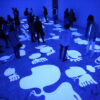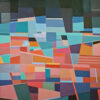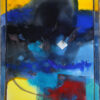Art engraving and etching, are originally a technique associated with the emergence of the art of printing, and later became an artistic technique and independent art in Europe at first. This technique is based on drawing the subject on a wooden panel or a metal plate (or other materials) and then engraving its graphic elements; i.e. the lines and points to finally arrive at an engraved model that is printed on paper using a press machine to get a certain number of copies, later. The dimensions of the printed copies are usually determined by the dimensions of this pressing machine, some types of which were used to print newspapers and publish manuscripts… Thus, engraving products remain small in dimensions compared to paintings…
The art of engraving is soon to be disappearing from the art exhibitions scene in our lands if not for some promising experiments that are resisting to survive, despite having the artistic energies and experts in the techniques of this art. What was the cause behind this art fading little by little? Was this faint presence limited to art schools and academies so that this art could serve as a lesson in art techniques? Is the weak presence of this artistic form due to the staggering developments that the visual arts have known in the modern and contemporary art movements, where print art no longer has a special status in the face of the openness of the photographic arts to new technologies to ensure their automatic duplication, dissemination, and copying from each other? And yet, the avant-garde artists during the first half of the twentieth century encouraged duplication in their campaign against the unique and the original, as “the opposition between the original and the duplicate dissolves to an extent that it often loses the slightest semblance of relevance and referential relation”(1)… Marcel Duchamp even bragged about it and said: “Both the ready-made and the like convey the same message. Indeed, all the ready-made products that exist today are not original in the usual sense of the word”, as stated in the writings of Michel Sanouillet, about The Pioneer of Avant-garde.(2)
Is this weak presence of print art due to the domination of oil painting at the expense of other branches of art? Is print art no longer able to impose its presence, if it were to resort to the unique technical components that distinguish it and are limited to it? What made so many engravers, even skilled ones, give up their art to join the rest of their fellow painters? Is it necessary for every engraver to resort to the technique of oil painting, and shrunk inside it, in order to salvage his experience from receding? Is the combination of the two techniques (engraving and imaging) a pragmatic solution that has benefits on the visual and promotional front? Not to forget that the oil painting itself faces difficulties on the promotional front.
Is this due, then, to meta-aesthetic factors that are beyond the artists’ control, i.e. the art collecting market and the logic of artistic investment, as if the “art collectors” were not prepared to experience the presence of small engravings hung between large oil paintings that grow larger and larger each day?
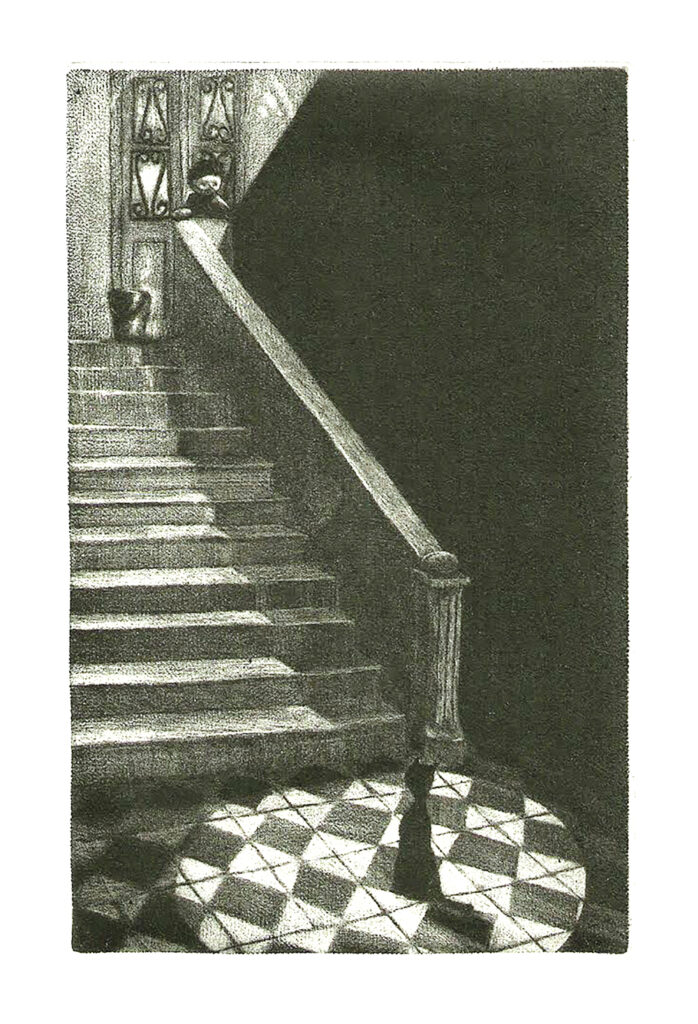
Print Art has many functions including documenting, registering, and pedagogic ones, and since its emergence in the 15th century, those functions were meant to pass historical and epistemological data directed through the image, since it was engraved on wooden panels of deducted drawings, which were transferred on paper using ink. Print Art had an important role in revitalizing the culture of the artistic image after the European Renaissance in addition to modernizing its communicative components, especially with the prosperity of painting arts and the spread of academies…
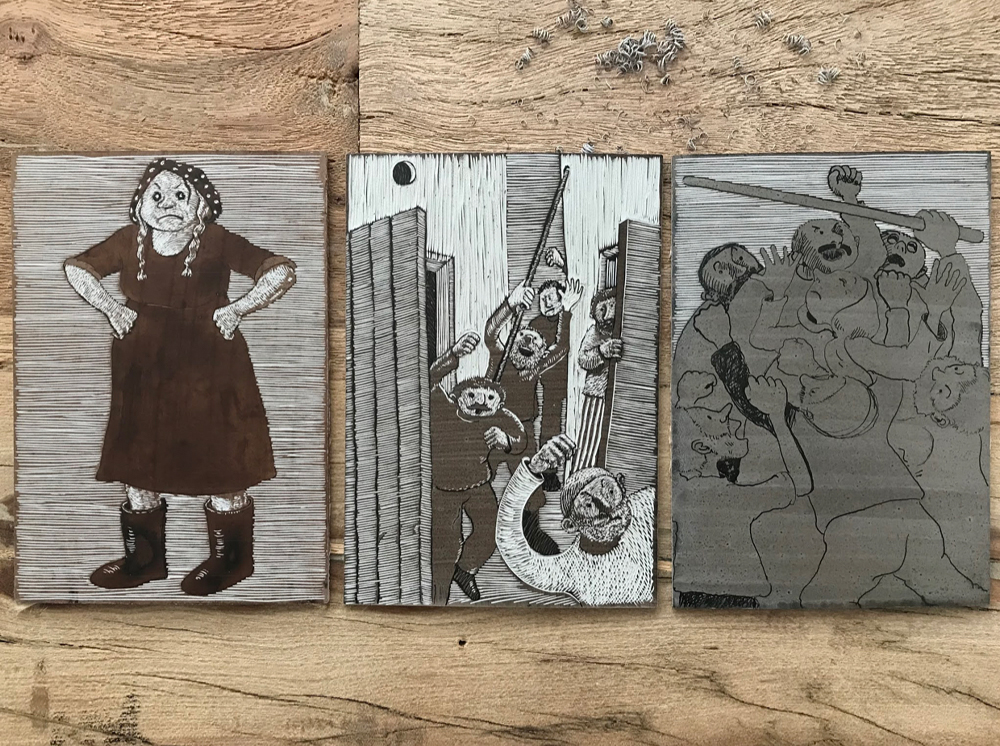

In addition to the creative discoveries provided by Renaissance artists, which confirmed the expressive capabilities of the language of fonts and colors and the turning points induced by Dutch painter Rembrandt in the history of this art, as he helped in the 17th century to spread the technique of engraving on metal plates of zinc and copper… The art of engraving has an organic relationship with painting, and many engravers were mainly painters. one reason is that engraving lines require mastering drawing them in the first place, and another reason is that printing art, in its early emergence, was meant as a reproduction of drawings and paintings in order to ensure their spread, taking advantage of new printing techniques. Plus, Rembrandt’s contributions to this field extend to more than that, as studies have shown that for him, what is extracted through the mechanical printer was not enough, but he would rather restore the copy and add his own touches, this means that such a tradition is not new, meaning the contemporary artists were not the ones to come up with it. Researchers Rutgers and Standing managed to reveal the extent to which Rembrandt edited his printed artworks by hand, and made changes to the copied forms, to his liking, in order to give his art these renewed impressions. For him, what the machine produced was never enough. This comes to confirm that the engraved paintings of this reputed artist were not mere mechanical duplications.(3)
The second half of the 19th century was vital in elevating the status of engraved “painting” when many artists came to master this art form, such as Francisco de Goya and the followers of the Barbizon art movement… it was in that period of time when the number of extracted copies was starting to be limited and the copies were numbered to protect the unique artistic entity of the engraved painting so that distorted copies are not counted after the original printed painting has been eroded due to pressure and overuse. By the end of the 19th century, print art became a creative task in addition to its duplication functions which attracted many generations of artists who mastered this technique, and it became a self-standing art, even a fertile space for creativity for pioneering artists of modernization in the twentieth century, such as Catalonia Painters like Pablo Picasso and Joan Miro… so that engraving became an artistic subject that marks the beginning of their creative journey, particularly in their youth. It was also in the late 19th century that artists who work in art print (engraving) were divided into teams, one that is specialized in duplicating and copying and another concerned with the creative investment of acid liquid technology and its applications in producing accurate drawings on metal plates, especially copper, which is called in French (l’eau forte) or strong liquid that engraves the shapes on the metal plate, creating deep folds and creases that ink could not pass, and we call it acidic engraves.
Hence, print art was no longer just a technique used by printing workers with the help of metalsmiths, but rather an expression field fit to be utilized culturally, epistemologically, and in media and advertisement… as newspapers used to publish pictures that are processed with engraves between their columns. However, this creative trend, which relied on reproducing the image of “reality” within the engraved painting, was mainly reliant on the march of art history, during its most realistic and natural milestones that shined in the middle of the 19th century and had some roots in classicism, where the painter was committed to academic standards and the authority of lines and prioritizing them over the emotionality of colors.
There is no real evidence that engravers reacted to the Impressionism revolution that emerged in the 70s of the 19th century, the revolution that gave dynamic touches, colorful details, and the light content of the color, in addition to their perceptual conditions, a central place in the expressive and aesthetic values of painting art. While Impressionism was based on a subjective and free vision of reality with its emotional charges, the engraved painting remained reliant on an “official” and “fabricated” image of reality as a reference for vision and a basis for it!




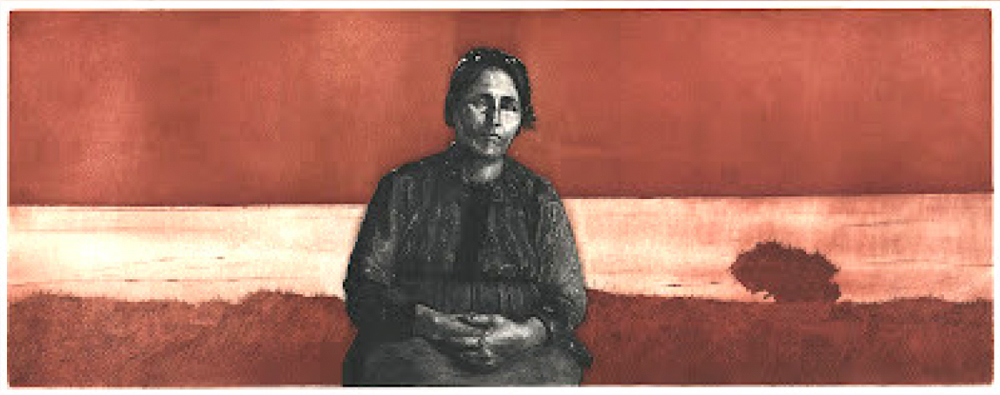

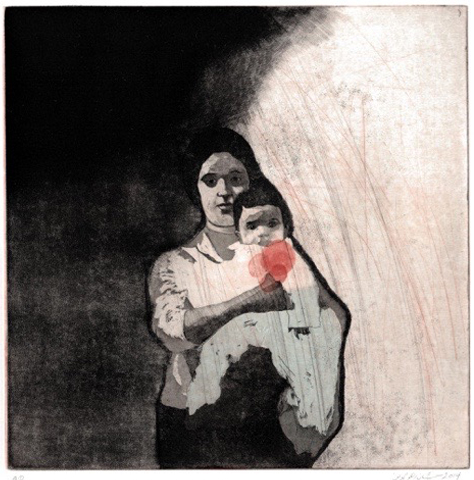


Thus, while Impressionism resulted in significant developments and turning points in the way of expression and performance and the processing of the art form visually to the limits of abstraction, as would appear at the beginning of the 20th century, the engraved painting remained closely linked to the logic of the realistic scene to produce “iconic” images that “Document” historical events and facts. (Or fabricating them however it pleases the dominant editorial line that the state was controlling at the time), those events that are presented to us as absolute facts, without a shred of doubt and with no area for interpretation.
And when the printed painting managed to get rid of the task of promoting the classic painting, reproducing it, and making copies of it, it became a self-standing art, yet it remained submissive to the authority of the “programmed” historical subject, from which it derived the legitimacy of its documentation and presence in media and in education… the engraver was like a special envoy, accompanying the colonial and military campaigns that support the state’s project, while the Impressionists were striving to prioritize their visionary and individual projects that rebel against the academic and official law, indifferent about the fact that they were rejected by the state and the dominant cultural and critical authority at the time. Thus, despite the independent status the print art managed to gain apart from the crafting field, which in itself became a self-standing form of art, it would be difficult to speak about the engraved painting apart from its “function” as to document the events after the 19th century. but its association with media platforms (books, newspapers, posters…) made it a medium to showcase the state’s victories, or an inscription on the surface of historical memory, or a figure to declare the state’s project abroad and establish its authoritative image within. That is because, in order to receive payment for a printed artwork, it must be “beautiful”, and for it to be beautiful here means that it had to advocate for the state’s vision, and to showcase its power and brutal force, all while adhering to the “beauty” standards of the handsome invading soldier, with the strong body structure and neat military uniform, so much that people must fall defeated at the walls of their city on the hands of the invaders, all of that was a must for a printed artwork to prove its aesthetic value, while trying to polish the image of the invaders, at the time of the colonial campaigns.
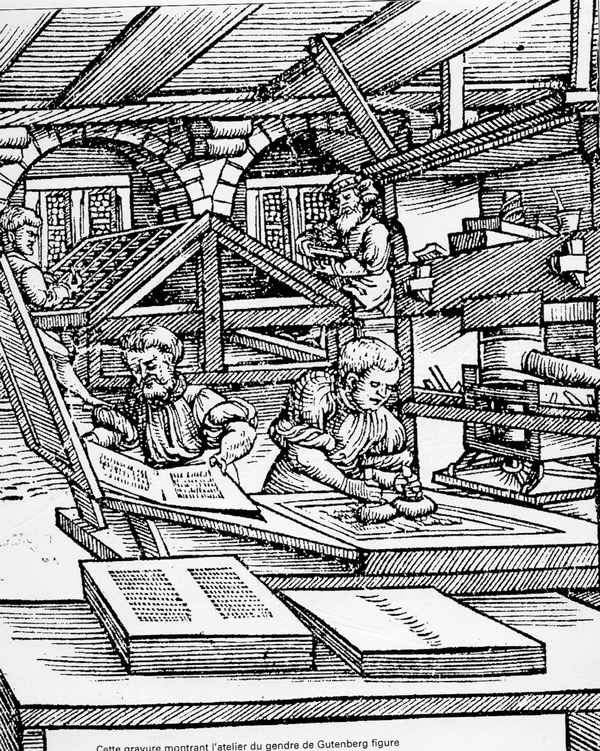
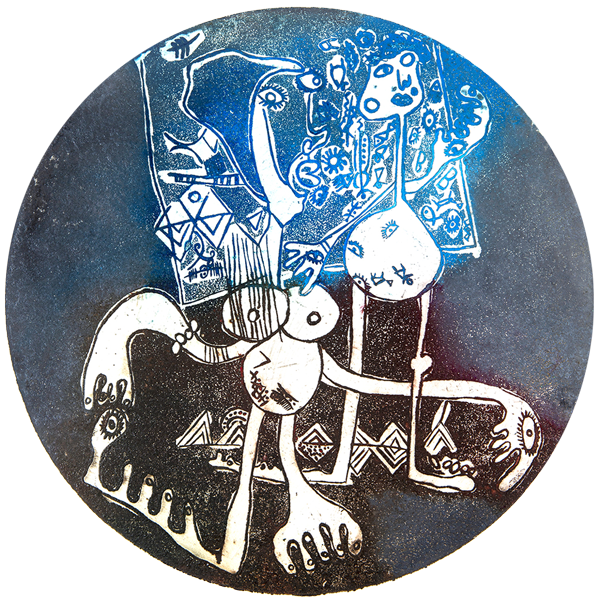
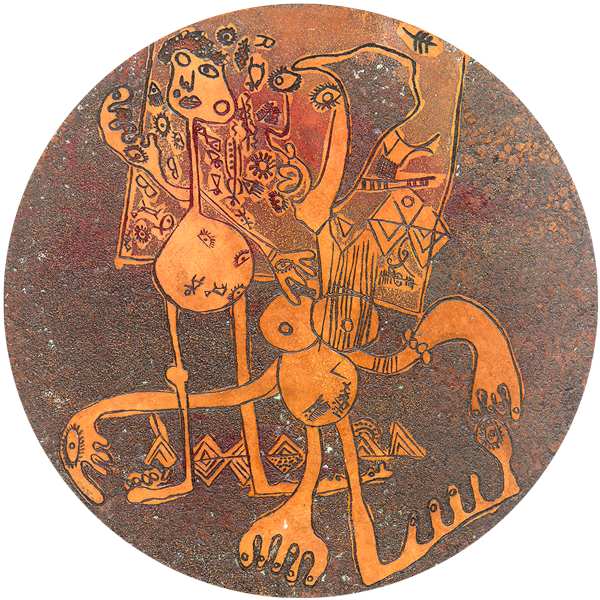
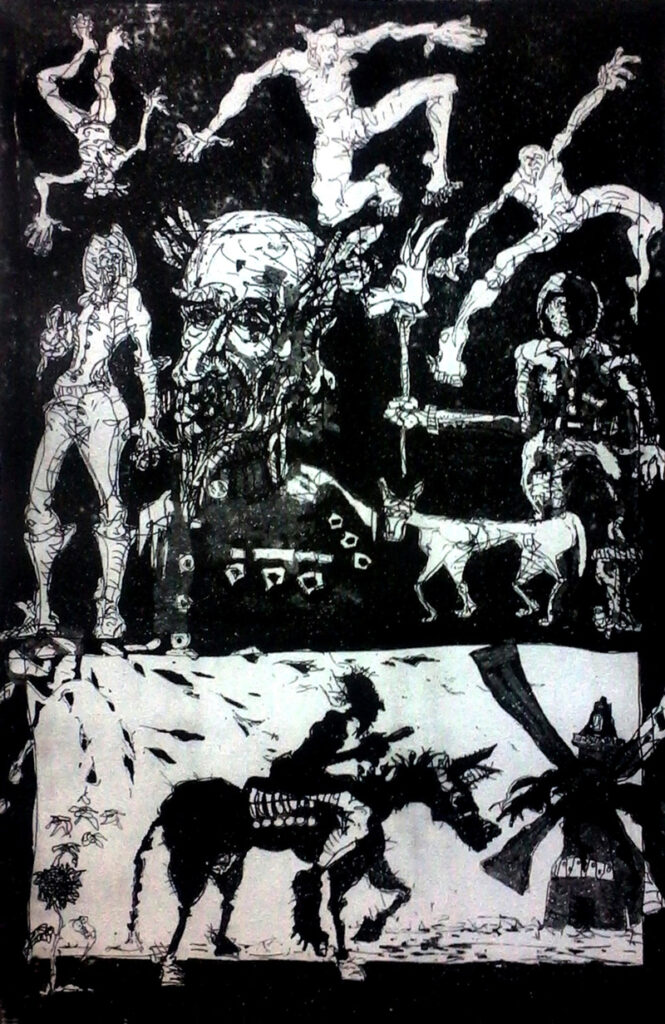
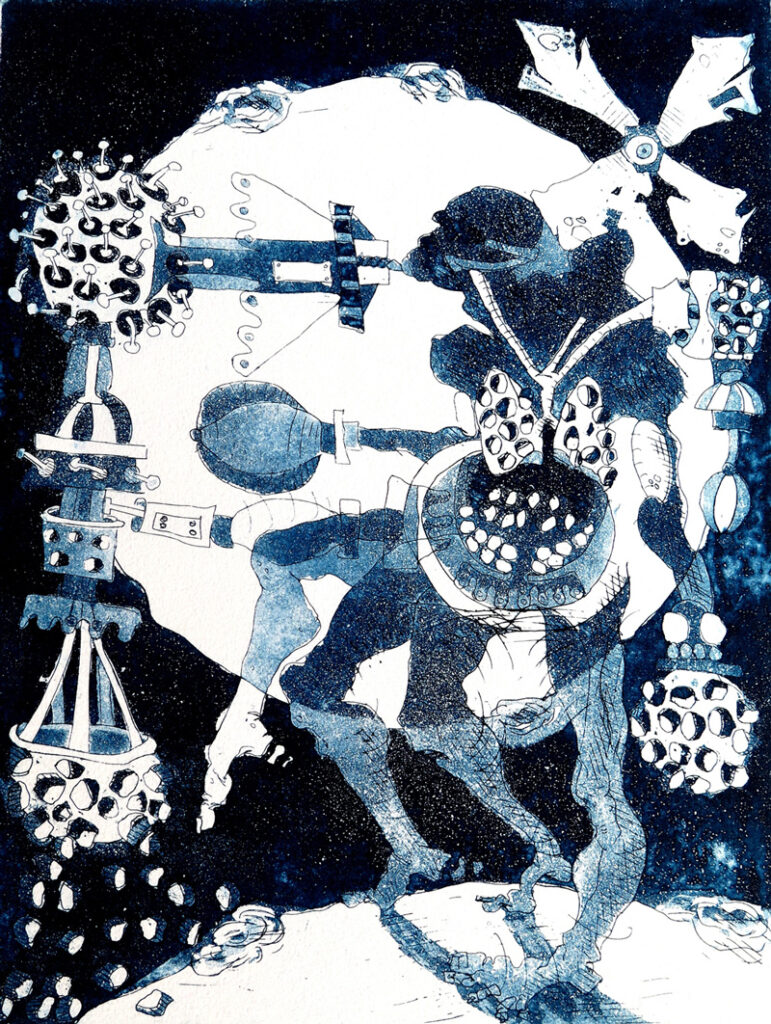

In this way, Western engravers were loyal to the state’s project in the European countries, working for it, supporting the media and official discourse, and looking for justifications for it within the capabilities of the artistic image, and you see them innovating and inventing in it by all means. On that basis, the engraver played the role of a photographic informant in accompanying official delegations, propaganda campaigns, and military fleets to glorify the state’s authority, document its achievements, portray its victories, fulfill its expectations, and direct public opinion toward its strengths…
and the acidic prints that depict the French military invasion campaigns in Tunisia since the year 1881 are nothing but a small part of the strategic adaptation in which print artists were engaging in one of the crucial periods of its prosperity in France, at the end of the 19th century, same to what happened in the French attack on the city of Sfax, where the military fleet was reinforced with a team of print artists and those engravers went far in creatively depicting the army, equipment, scenes of killing, and tightening the control over Sfax, the people, and the buildings. while completely ignoring the unparalleled resistance and courage shown by the city’s residents. So in this example, we can say that some of the print artists served as state employees, especially in the late 19th century and they were charged with specific tasks in manufacturing the image of the state and adapting the facts of history in a manner that works to polish this image.
So art print (Etching & Engraving) over the course of the 20th century was a form of modern art expression, as it ditched its documenting functions behind in order to become a liberated art, committed only to its techniques of drawing and engraving, on wooden and metal plates, and in print… it has also contributed to expanding the horizons of visual arts towards the unique styles and the methods to re-writing the elements of the world according to the creative self-using the colors, lines, and lighting values. this visual art has witnessed prosperity within the workshops of fine arts institutions and colleges, and within the landscape of art exhibitions.
In the Arab world, a generation of creative minds were prominent figures, who led the wave of pioneering in the development of print art and spreading its artistic culture. among those we mention are, Mustafa Al Hallaj from Palestine, Rafea Al Nasiri from Iraq, Ibrahim Al Dahhak and Mohammed bin Muftah from Tunis, Mariam Abdulalim and Fathi Ahmed from Egypt, Taher Al Maghribi from Libya, Muhidden Al-Homsi from Syria, and Rashid Dyab from Sudan… The Iraqi artist Diyaa Al Ezzawi has held a creative dialogue, through print, with some of the most notable literature texts in the narration legacy and modern literature in poetry and in novels.
One of his most prominent engraves in the form of textbooks was inspired by ” One Thousand and One Nights” or with Ghassan Kanafani texts, or “Songs of Life” poems by Aboul-Qacem Echebbi. the Tunisian artist Ibrahim Al Dahhak has previously tried to re-paint “Jaziya al-Hilaliyyah” epic relying on the orally passed-on narrations on one hand, and on the heritage blogs of glass paintings which were made at the end of the 19th century and the beginning of the 20th century by craftsmen and folk artists.
This could also take us to the experience of artist Mohammed bin Ayyad, where the engraved print became the basis for his experiment in oil painting, or to the experience of Naji Al Thabiti in his engravings that has a surrealist vibe. Artworks by Al-Thabiti, as common with surrealists, show the great accuracy of depicting details, loyal to his academic background having studied under Mohammed bin Miftah and Al-Hadi Al-Labban, who were masters of print art.
While Baker bin Faraj restores the raw engraving called “matrix”, then adds artistic interventions to become unique and suitable for display. same with Salwa Al Aydi, which goes back and forth between the spontaneity of childish drawings and the ancient adorned marks within an embodied scenography that restores the early phases of maturity in childhood, so the engraved metal plates are displayed in themselves without the need for duplication, while adding some inks sometimes.
Fatima Dummaq’s artworks, on the other hand, explore the narratives of artistic marks, and go onto different paths for lines and colors, in an aesthetic scene that picks its vocabularies of life’s delight in the natural subject, so it is reproduced into mini paintings and adjacent parts in the display space.
Art print also provides us with varied creative horizons that emphasize its fertile nature and ability to engage in art updating challenges, as in Karima bin Saad’s experience, who tried to invest in the tiny graphic details, or the experience of Rashida Amara who tried to find a connection between the subject of the body and its screaming expressionism references. also, Kamal Abdullah’s experience who dedicated his academic experience in print art to continue with the events of “Don Quixote” and resuming life between its figures and knights as written by its Spanish author Miguel de Cervantes. in those examples, it becomes clear how important of a role print art plays in the mutuality of arts and literature, along with its corresponding and dialogue between each other and in expanding the horizons of the visual game, just as in Kamal Abdullah’s exhibited artworks, who won the award of the Iraqi pioneering sculptor Refea Al Nasiri, in his most recent exhibition in 2021, in which he transformed all of the humanity concerns around COVID-19 pandemic into documents beating with the vivid life in a message that encourages to resist.
And while print art contributed to spreading the culture of visual arts in the Arab countries through duplication, which corresponds to many modern proposals in the field of manufacturing and promoting art, as appeared in the proposal of the philosopher Walter Benjamin from Frankfurt School, in his article “The Work of Art in the Age of Mechanical Reproduction” (1936), where he focused on how duplicating arts have sacrificed the aura of the artwork, and said: “The criteria of authenticity cease to be applicable with every reproduction, not only with mechanical reproduction in printing presses”(4)
… yet, print art has faced several crises within the programs of assembling, marketing, and cultural investment. This is mainly due to the fact that reproduction affects the uniqueness of the work and thus reduces its financial value… which led the presence of this art to decline in the galleries of exhibitions, as many print artists turned to other techniques such as oil painting, in the 20th century, while the presence of this art continued to prosper in the teaching programs of art institutes and colleges, preserving its status as a stand-alone specialization, due to the creative processes that make it possible for it to utilize the artistic intelligence.
However, some new creative approaches found their way to light during the few past decades by young engravers to develop this art and integrate it into contemporary art, by creating an association with the new technologies and cleverly utilizing printing techniques and the development of the paper industry, as well as digital processors in computers.
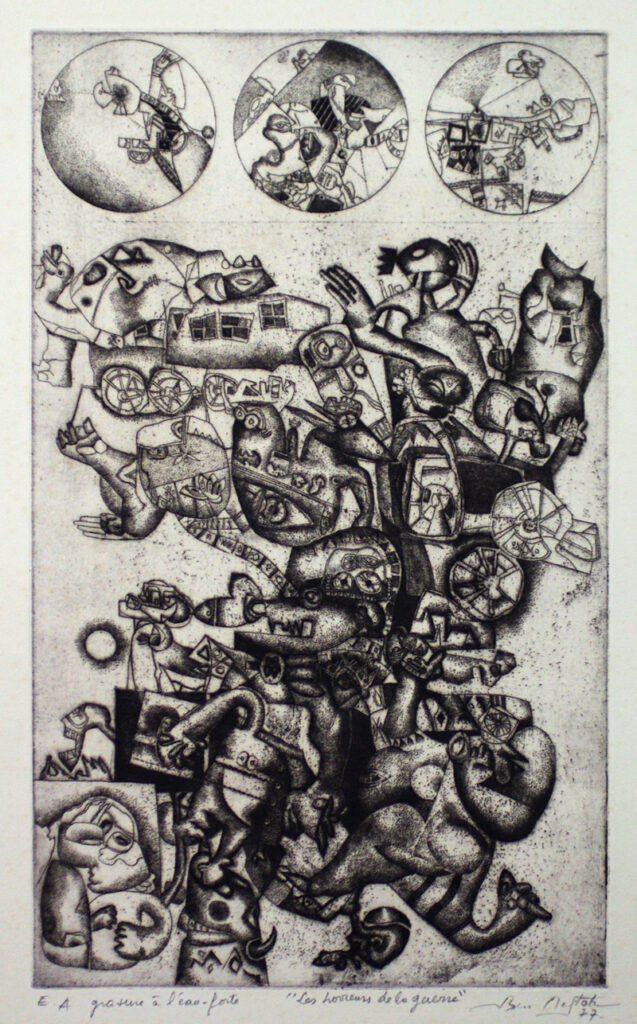


In this new horizon, print art emerged from its isolation that confined it to its traditional frameworks to begin a new life cycle from within the visual art discourse at times, and from within the art of print design programs at others. Some of the results of experimentation in this field led to promising outcomes for many innovators in the West in particular, while we notice, from time to time, some promising visions in the Arab world, all initiated from within workshops…



In the field of multi-disciplinary artistic interventions within the culture of contemporary art, we can mention the experience of artist engraver Islam Belhaj Rhouma two decades ago, when he, along with print artist Raouf Al-Karay, introduced contemporary artworks that adapted print art techniques, while adding a few touches of serial printing (Serigraphy), video and installations, in the gallery of the Higher Institute of Arts and Crafts of Sfax (ISAMS)
We can also mention the experience of the bio-artist Amin Al-Ghariani, who benefited from his first academic specialization in print art to introduce new proposals in which he attempted to create a link between this art and nano-technology within a laboratory and microscopic approach to living natural components. In these two examples, it becomes clear to us the extent to which print art was able to create channels of communication with other art genres. However, this cannot replace the vividness of artistic performance, along with its raw impact and the expressive and creative richness provided by the living human hand, and other virtues of engraving with its traditional tools. It is a dialogue between acidic and wooden materials and an inspiring interaction between the artist’s body and the core matter of the world, that is gradually forming before our eyes, line by line, color by color… to reflect, from between the lines engraved on the plates, the terrain of human conscience, the early and glowing human vision, and the vast human imagination in which he could recruit the elements of artistic spaces.
This way, print art cannot but build bridges for dialogue with the new printing and digital technologies in order to leave its ancient academic solitude and go on with the journey of writing the creative history of the world while it is going amidst its epistemological battle so its presence could cross the limit set for it of being an academic technique within the walls of art schools…
The power of art lies within its ability to transform the engraved lines into screaming wounds that expose the agony of life and the paradoxes of the world… while keeping some marks lying within the folds of the human sentiment and the working fields of rich imagination. in between print artists’ hands, the world gets to beat again, and in between the engraved lines and layered colors, life resumes its renewed circle and art print now is no longer the main registration of events or just scripts on the surface of the hazy wandering memory.
This transformation from the documenting function, on which print art was founded, into the creative promising function, has enabled it to award the language of the visual arts with new victorious ways of re-picturing the image of the world and its recognized elements. it is a truly impressive feature of that art to have the elements of the world shaping right before our eyes, line by line, and color by color, in an amazing poetic way that transforms these elements into geographic markings of the inspiring human sentiment, then spread via duplication to become promising cultural insights and early bright anticipations for humans, it is a Becoming of the impressive metamorphosis, and the process continues…
References
1. Riout (Denys) : Reproduction, originalité, art, article in Encyclopædia Universalis, Paris, 1968, p. 2451
2. Ibid, (A propos des « Ready-mades », 1961, repris in Duchamp du Signe. Ecrits réunis et présentées par Michel Sanouillet, 1975). P. 2456.
3. Rutgers (Jaco) & Standring (Timothy J.) : Rembrandt : Painter as Printmaker. Hardcover. 2018.
4. Benjamin (Walter): In Ecrits Français. Présentés et introduits par Jean Maurice Monnoyer. Ed. Gallimard, NRF, Paris, 1991, p. 142.
Prof. Khélil GOUIA holds a Ph.D. in Art sciences and Techniques/ specializing in contemporary art, hes is a researcher, artist, & Professor of art theories and semiology at the University of Sfax, Tunisia. He is awarded Shiekh Zayed Book Awards, Abu Dhabi International Book Fair, 2021, UAE. He is the chief editor of “Founoun” magazine, which is published by Ministry of Culture, Tunisia, since the beginning of 2013.



